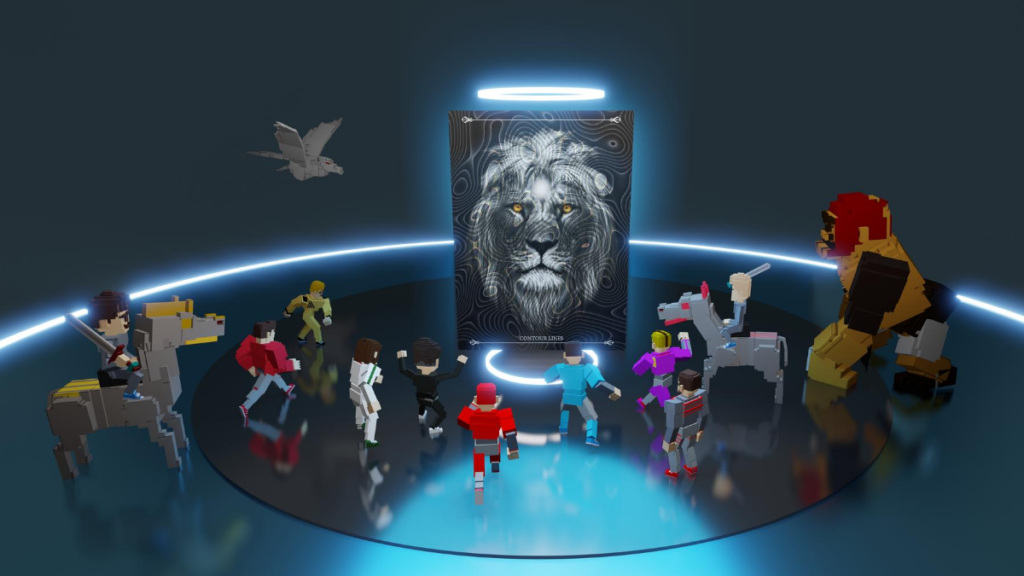Metaverse is a network of 3D virtual environments where people can play games, work, collaborate, or participate in live events. As a concept of a parallel universe, it not only mimics our physical world but also envisions ways to merge with it to open up endless immersive experiences.
Many technologies will act as the backbones of this yet-to-be-fully-realized vision. Among them are blockchain, virtual and augmented realities, 5G, artificial intelligence, and the internet of things.
NFTs have a vital role to play in the convergence of these technologies. Forward-thinking companies are already getting to grips with NFTs’ potential by integrating them as different kinds of digital assets into their metaverse projects.
Virtual lands
A metaverse is comprised of digital pieces of real estate, in other words, virtual lands. The blockchain metaverse projects like Decentraland or the Sandbox sell these virtual lands as NFTs.
NFTs function as a deed and grant buyers the ownership of these lands. Consequently, owners control their assets and benefit from many economic advantages.
To give you some examples, landowners can sell their assets for profit on NFT marketplaces like OpenSea. Some metaverse projects also allow renting lands. For instance, Sandbox landowners can earn passive income by renting the lands to game creators. They can also create their own games to generate revenue when other players visit their lands and interact with the games.
Access to exclusive events
NFTs can serve as tickets to access exclusive metaverse events such as concerts or art exhibitions.
These token-gated events are trendy, particularly in the Decentraland metaverse. The Halloween party hosted by the team of the Deadfellaz collection was an example of such an exclusive event. The party was in partnership with the famous DJ Steve Aoki, and it was only open to the holders of Deadfellaz or Steve Aoki NFTs.
NFT avatars
You join a metaverse using a digital representation of yourself known as an avatar. Your avatar doesn’t have to be an NFT. But if it’s, it’ll be unique, and you’ll own it.
The prominent profile picture (PFP) NFT projects that made the headlines in recent years, like the CloneX NFTs by RTFKT and the Bored Ape Yacht Club NFTs, are transitioning into metaverse avatar projects. The owners of these unique digital NFT arts will be able to convert their profile pictures into 3D avatars in the near future.
Fashion NFTs and the metaverse
Another hot topic NFTs are closely related to the metaverse is digital fashion. This is a huge area as people are keen on representing their unique styles in the digital realm, as well.
Many collaborations with well-known brands have already taken place in this regard. A noteworthy partnership was between the sportswear brand Adidas and NFT giants BAYC and Punks Comic, featuring a collection of 30,000 editions of an NFT.
Another collaborative NFT fashion initiative was between Under Armour and the basketball player Stephen Curry. The NFTs were digital replicas of Curry’s sneakers, which he wore when he broke the all-time NBA record for three-point shots. The collection went by the name Genesis Curry Flow.
Play-to-earn NFT games
Games are at the heart of metaverse projects. Play-to-earn (p2e) models inspired gamers from all around the world since they enable gaining monetary incentives along with having fun. In these games, the in-game assets, like skins, swords, and heroes, are all NFTs. Thus, their buyers own them, unlike conventional video games.
P2e games are crucial for the mainstream adoption of the metaverse. Because gamers are tech savvy and have already engaged with metaverse-like gaming environments, it’s no surprise that NFT game pioneers like Axie Infinity, Illuvium, and Star Atlas, are all building their own metaverses.

